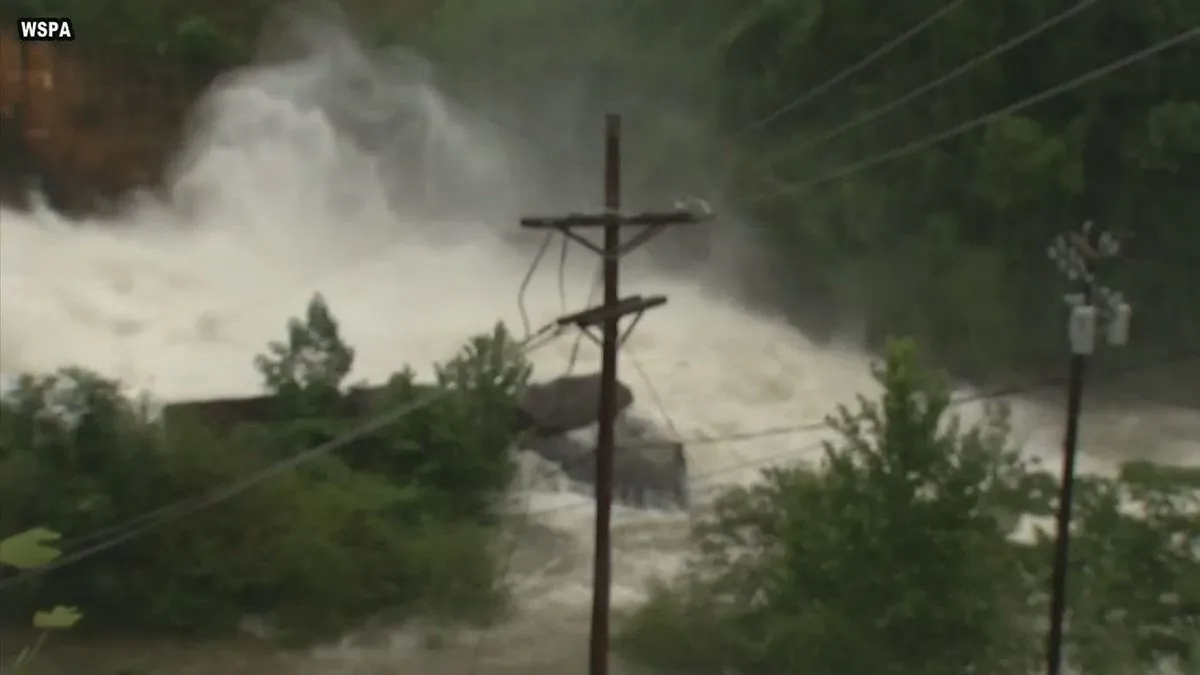North Carolina Grapples with Severe Flooding as Helene's Aftermath Unfolds
Western North Carolina faces widespread flooding after Hurricane Helene. Officials monitor dams, close major roads, and conduct numerous rescues as the region experiences its most significant natural disaster in recent memory.

Western North Carolina is currently experiencing severe flooding, a result of prolonged rainfall culminating in the aftermath of Hurricane Helene. The region, known for its picturesque Appalachian Mountain range and vibrant arts scene, is now grappling with what officials describe as the most significant natural disaster in recent memory.
Hurricane Helene, a powerful Atlantic storm, made landfall on September 26, 2024, along the Florida Panhandle. Within 12 hours, it had traversed to the North Carolina mountains, bringing tropical storm conditions. The storm's impact was particularly felt atop Mount Mitchell, the highest peak east of the Mississippi River, where wind gusts reached 108 mph (174 kph).
The deluge has prompted officials to closely monitor the Lake Lure Dam, created nearly a century ago by damming the Broad River. The entire length of the dam has been overtopped, causing erosion concerns. Downstream communities have been alerted to potential evacuation needs. Interestingly, Lake Lure gained fame as a filming location for the 1987 movie "Dirty Dancing."

Travel across the region has been severely impacted. The North Carolina Department of Transportation has advised against all road travel in the western part of the state. Major arteries, including Interstates 40 and 26, have been closed due to dangerous conditions. This disruption extends to Boone, home to Appalachian State University, which has canceled its upcoming football game.
"The priority now is saving lives."
The governor reported that as of Friday morning, September 27, 2024, crews had conducted 100 swiftwater rescues. Ryan Cole, Buncombe County Assistant Emergency Services Director, highlighted the unprecedented nature of the disaster, mentioning that some areas were experiencing flooding for the first time in recorded history.
The severity of the situation has drawn comparisons to the catastrophic flood of 1916, which claimed 80 lives and caused extensive damage to infrastructure, isolating mountain communities for days. Current forecasts suggest that floodwaters may not recede until at least Monday, September 30, 2024.
The flooding has particularly affected Biltmore Village, adjacent to the renowned Biltmore Estate, the largest privately-owned house in the United States. The overflowing Swannanoa River, a tributary of the ancient French Broad River, has submerged vehicles in the area.
This disaster underscores the vulnerability of the region to extreme weather events. Western North Carolina, part of the original 13 colonies and nicknamed the "Tar Heel State," is known for its diverse landscapes, from the Great Smoky Mountains National Park to the Blue Ridge Parkway. The area is rich in history, being home to Cherokee Native Americans and the site of the Wright brothers' first flight in 1903.
As the situation unfolds, local authorities continue to prioritize rescue operations and public safety. The resilience of North Carolina's communities, from Asheville's craft brewery scene to Boone's mountain culture, will be tested as they face this unprecedented challenge.


































